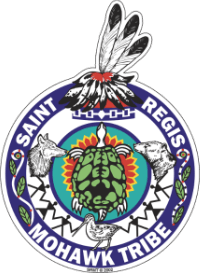5.06.030 Definitions
(a) "Board" shall mean the Akwesasne Environmental Appeals Board.
(b) "Environment Division" means the Environment Division of the St. Regis Mohawk Tribe.
(c) "Person" shall mean any corporation, firm, partnership, association, trust, estate, one or more individuals, and any unit of Tribal government or an agency or subdivision thereof.
(d) "Pollution" shall mean the presence in the environment of conditions induced by humanity or any substances in quantities or characteristics which are or may be injurious to human, plant or wildlife, or other animal life or to property.
(e) "Wetlands" means lands and waters of Akwesasne as shown on the wetlands map and that are seasonally or permanently flooded by shallow water as well as lands where the water table is close to the surface; in either case the presence of abundant water has caused the formation of hydric soils and has favored the dominance of either hydrophytic or water tolerant plants which are dependant upon or tolerant of very moist conditions. Wetlands may or may not contain species that are of value culturally to the Mohawks of Akwesasne. Lands that are under active agricultural use that are periodically flooded, soaked, or wet are not considered to be wetlands by definition.
(1) Wetlands are comprised of marshes, bogs, swamps and fens supporting aquatic or semi-aquatic vegetation:
(A) "Marshes" are wet areas periodically inundated with standing or slowly moving water and/or permanently inundated areas characterized by emergent herbaceous vegetation, and to a lesser extent, anchored floating plants and submergents.
(B) "Bogs" are peat covered areas or peat filled depressions with a high water table and a surface carpet of acidophilic mosses (chiefly Sphagnum). The water table is at or near the surface in the spring, and slightly below during the remainder of the year.
(C) "Swamps" are wooded wetlands including both forest swamps and thicket swamps, with 25% cover or more of tall trees and shrubs. In swamps, standing to gently flowing waters occur seasonally or persist for long periods on the surface.
(D) "Fens" are peat accumulating wetlands characterized by surface layers of poorly to moderately decomposed peat, often with well decomposed peat near the base. They are generally covered by a dominant component of sedges although grasses and reeds may be present. Fens receive some drainage from surrounding mineral soil and supports marsh-like vegetation.
(E) "Wooded Wetlands" are wetlands dominated by trees; a forested wetland.
(F) "Wet Meadows" are grasslands with nearly saturated soil near the surface, but without standing water for most of the year.
(G) "Open Water" refers to water that is free of emergent vegetation or artificial obstructions.
(H) "Emergent Wetland" refers to wetlands dominated by mostly herbaceous emergent vegetation.
(I) "Forested Wetlands" are defined by the presence of trees which mostly cover the site (see, "Wooded Wetlands").
(J) "Scrub/Shrub Wetlands" exhibit wetland soils and hydrogeology, and are populated largely by shrubs, bushes or brush which are persistent year to year.
(K) "Reed Swamps" refers to marshes dominated by Phragmites (common reed).
(L) "Slough" refers to an elongated marsh often bisected by a creek with slowly flowing surface water.
(M) "Pot Hole" refers to a shallow, marsh-like pond.
(N) "Peatland" is a generic term for any wetland that accumulates partially decayed plant matter.
(f) "Emergent" means rising above a surrounding medium, as in wetland plants protruding above the water level.
(g) "Wetlands map" shall mean a map promulgated by the Environment Division by their authority under Section 5.06.040 of this chapter on which is indicated the general boundaries of any wetlands.
